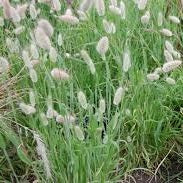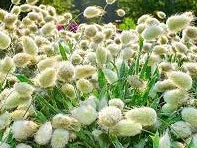The Bamboo Seed
Ornamental Grass Seeds - Bunny Tails Grass Seeds
Ornamental Grass Seeds - Bunny Tails Grass Seeds
Couldn't load pickup availability
Bunny Tails Grass Seeds - Lagurus ovatus
- Quantity 100 Bunny Tails Lagurus ovatus ornamental grass seeds for sale
- USDA zones 2-11
- Annual grass seed - self seeding
- Ornamental grass seed
Lagurus ovatus Seeds for Ornamental Grass
Lagurus ovatus, commonly known as bunny tails or hare's-tail grass, is an annual ornamental grass species that belongs to the Poaceae family. It is native to the Mediterranean region, particularly the Canary Islands and North Africa. This grass is known for its unique, fluffy flower heads that resemble the tail of a hare or rabbit, which gives it its common names. The flower heads are typically white, cream, or light pink in color and appear in late spring to early summer. The flowers are followed by small, oval-shaped seeds that resemble tiny pearls, adding to the plant's ornamental appeal.
Bunny tails grass is a compact plant that typically grows to a height of about 1 to 2 feet and has a similar spread. It has narrow, linear leaves that are light green in color and form a dense, clumping growth habit. Bunny tails grass is easy to grow from seed and can be sown directly into the garden soil or started indoors in seed trays. It prefers full sun to partial shade and well-draining soil.
Bunny Tails Plant Grown from Seed
Bunny tails grass is often used in mixed borders, mass plantings, or as a focal point in the garden, adding texture and interest to the landscape. It is also attractive to pollinators like bees and butterflies, making it a valuable addition to the garden ecosystem. Bunny tails grass is drought-tolerant once established and requires minimal maintenance, making it a popular choice among gardeners for its unique appearance, ease of cultivation, and versatility in the garden.
Germinating and Planting Bunny Tails Grass Seed
Germinating and planting bunny tails (Lagurus ovatus) seeds is a straightforward process, and the following steps can help you get started:
Seed Collection: Collect bunny tails seeds from mature flower heads that have turned tan or brown. The seeds are small and should be easy to remove from the flower heads.
Seed Preparation: Bunny tails seeds have a hard outer coating that can prevent germination. To improve germination rates, you can scarify the seeds by gently rubbing them with sandpaper or nicking them with a knife. Alternatively, you can soak the seeds in warm water for 24 hours before planting.
Seed Sowing: Bunny tails seeds can be sown directly into the garden soil or started indoors in seed trays. If sowing outdoors, choose a sunny location with well-draining soil. Rake the soil to create a fine, level surface, then scatter the seeds evenly over the soil. Lightly press the seeds into the soil with your hand or a rake to ensure good soil contact.
Watering: Water the seeds gently but thoroughly after sowing to ensure the soil is evenly moist. Avoid overwatering, as this can cause the seeds to rot.
Germination: Bunny tails seeds typically germinate in 10 to 14 days, although it may take longer in cooler temperatures. Keep the soil evenly moist during the germination period, and provide some shade if the weather is hot.
Thinning: Once the seedlings have developed a few sets of true leaves, thin them to about 6 inches apart to allow for proper spacing.
Transplanting: If starting bunny tails seeds indoors, transplant the seedlings outdoors once they have developed several sets of true leaves and the danger of frost has passed. Harden off the seedlings by gradually exposing them to outdoor conditions over a period of 7 to 10 days before planting them in their permanent location.
Care: Bunny tails grass is a low-maintenance plant that requires minimal care once established. Water the plants during dry spells, but otherwise, they should not need much additional watering. Bunny tails grass is not usually bothered by pests or diseases, but keep an eye out for signs of damage and treat as needed.
Propagation: Bunny tails grass can be propagated by division in early spring or by collecting and sowing seeds in late summer to early fall.
Harvesting Seeds: Allow some of the bunny tails flowers to mature and dry on the plant. Once the flower heads have turned tan or brown, cut them off and shake them over a container to release the seeds. Store the seeds in a cool, dry place until you are ready to sow them.
Bunny tails grass is a versatile and attractive plant that adds texture and interest to the garden. By following these steps, you can successfully germinate and plant bunny tails seeds to enjoy their unique and fluffy flower heads in your garden.
Bunny Tails Grass Seed in Your Garden
The best location in the garden to plant bunny tails ornamental grass (Lagurus ovatus) is in a spot that receives full sun to partial shade and has well-draining soil. Bunny tails grass thrives in sunny conditions but can tolerate some shade, particularly in hotter climates. It prefers soil that is not too rich or overly fertile, as this can cause the plant to become floppy and less upright. Additionally, bunny tails grass is often used as an accent plant or in mixed borders, where its unique texture and appearance can be appreciated. It is also suitable for container gardening or as a focal point in rock gardens. Overall, planting bunny tails ornamental grass in a location with ample sunlight, well-draining soil, and enough space to showcase its fluffy flower heads is ideal for optimal growth and visual impact.
Decorative Uses for Bunny Tails Ornamental Grass
Bunny tails grass (Lagurus ovatus) is often used in dried flower arrangements due to its unique and striking appearance. The fluffy flower heads of bunny tails grass resemble the tail of a hare or rabbit, making them an interesting and visually appealing addition to dried arrangements. To dry bunny tails grass, harvest the stems when the flower heads are fully formed but before they start to shed seeds. Hang the stems upside down in a warm, dry location with good air circulation, such as a shed or garage. Allow the stems to dry completely, which can take several weeks. Once dry, bunny tails grass can be used in dried flower arrangements, wreaths, or as a decorative accent in vases or pots.
Planting Ornamental Grass Seed
Planting ornamental grass seed is popular among gardeners for several reasons. Firstly, ornamental grasses add a unique texture and movement to the garden, making them an attractive addition to mixed borders, mass plantings, or as a focal point in the landscape. Ornamental grasses come in a wide range of colors, forms, and sizes, allowing gardeners to create a diverse and visually appealing garden. Secondly, many ornamental grasses are low-maintenance and drought-tolerant once established, making them an ideal choice for busy gardeners or those with limited time for gardening.
Additionally, ornamental grasses are attractive to pollinators like bees and butterflies, contributing to the health of the garden ecosystem. Overall, the popularity of planting ornamental grass seed lies in their versatility, ease of care, and ability to enhance the beauty and diversity of the garden landscape.
Our ornamental grass seeds are ideal for adding texture and movement to your garden. The Bunny Tails Grass Seeds (Lagurus ovatus) produce fluffy seed heads resembling bunny tails, with fine-textured foliage and a neat clumping habit. Enjoy a unique, eye-catching display in your garden today.
Grow beautiful Bunny Tails ornamental grass in your garden with these unusual seeds. Grow an attractive, low-maintenance addition to any flower bed! Perfect for adding texture and depth to gardens of any size.
About Lagurus Seed
Lagurus is a genus of flowering plants in the grass family, Poaceae. It is native to Europe, Asia, and Africa and includes several species, the most well-known of which is Lagurus ovatus, commonly known as bunny tails or hare's-tail grass. This annual ornamental grass is characterized by its unique, fluffy flower heads that resemble the tail of a hare or rabbit. The flower heads are typically white, cream, or light pink in color and appear in late spring to early summer. Bunny tails grass is often used in mixed borders, mass plantings, or as a focal point in the garden, adding texture and interest to the landscape. It is also attractive to pollinators like bees and butterflies, making it a valuable addition to the garden ecosystem.
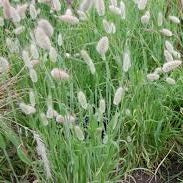
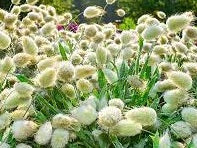
Collections
-
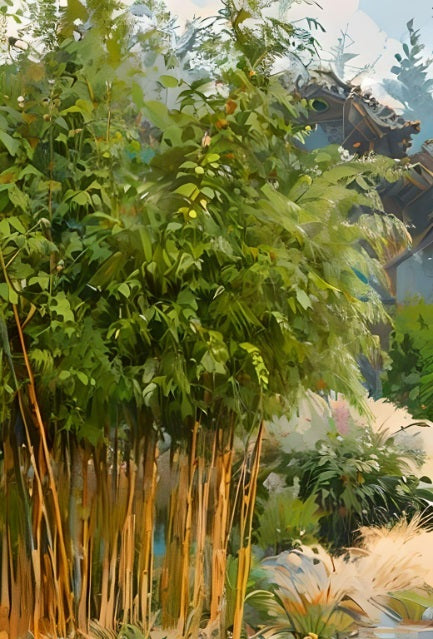
All Bamboo Seeds for Sale
Welcome to our catalog of bamboo plant seeds for sale including clumping...
-
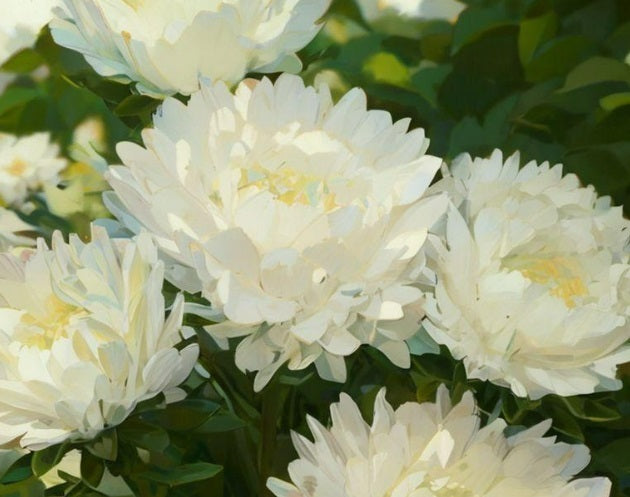
All Flower Seeds
All of our 2025 flower seeds are sold out. Please check back...
-
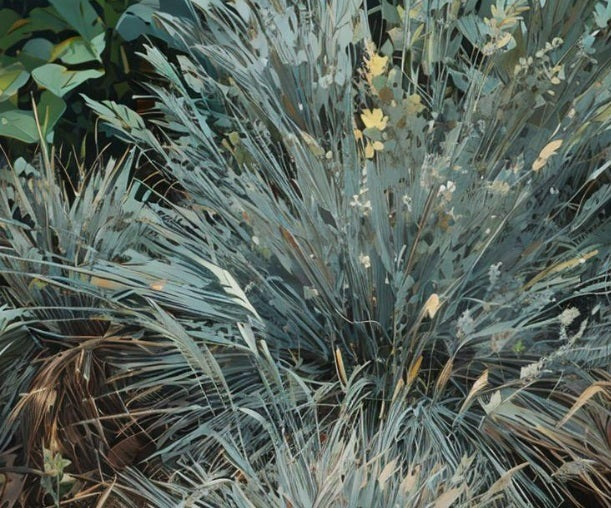
All Ornamental Grass Seeds
Grass has finally come into its own as a garden landscape centerpiece....
-
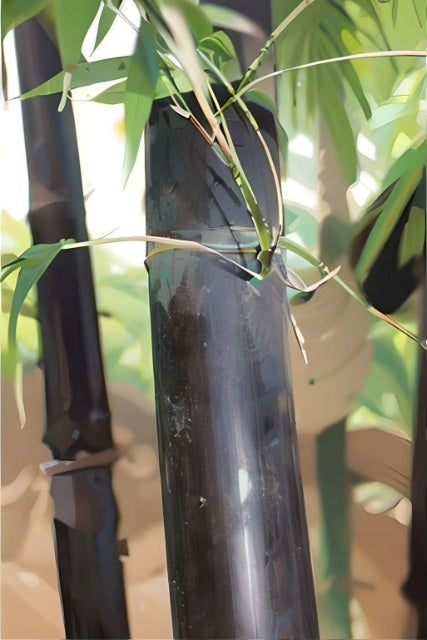
Black Bamboo Seeds
Consider Black Bamboo seeds for eye-catching bamboo varieties with lustrous black, dark...
-
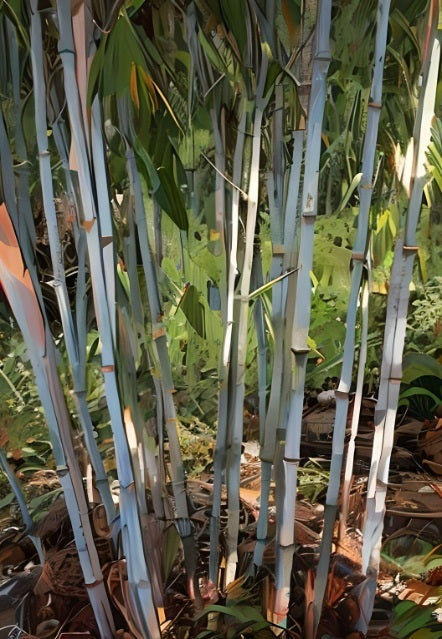
Clumping Bamboo Seeds
Clumping bamboo species grow in dense clumps or clusters that are naturally...
-
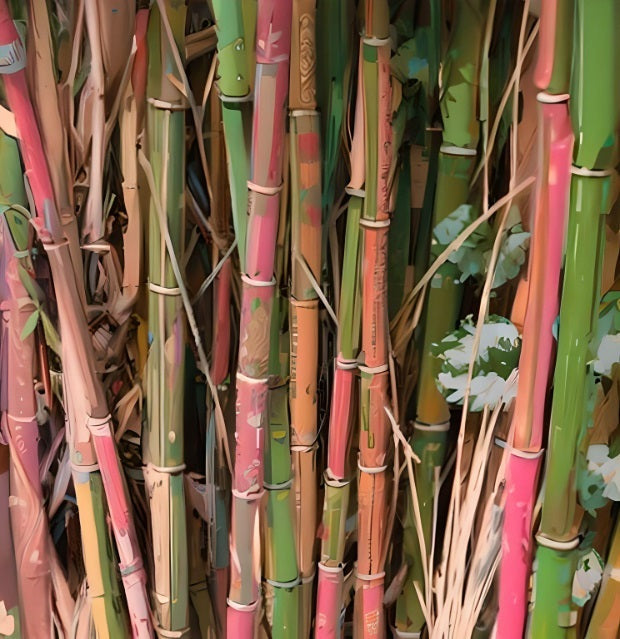
Cold Hardy Bamboo Seeds
A selection of cold resistant bamboo seeds for hardy bamboo able to...
-
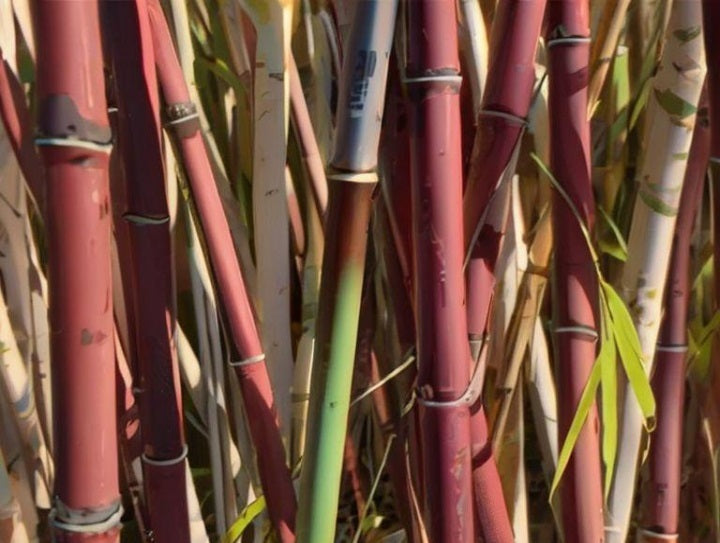
Fargesia Bamboo Seeds - Clumping and Cold Hardy
Buy bamboo seeds for beautiful cold hardy and clumping Fargesia bamboo. Our...
-
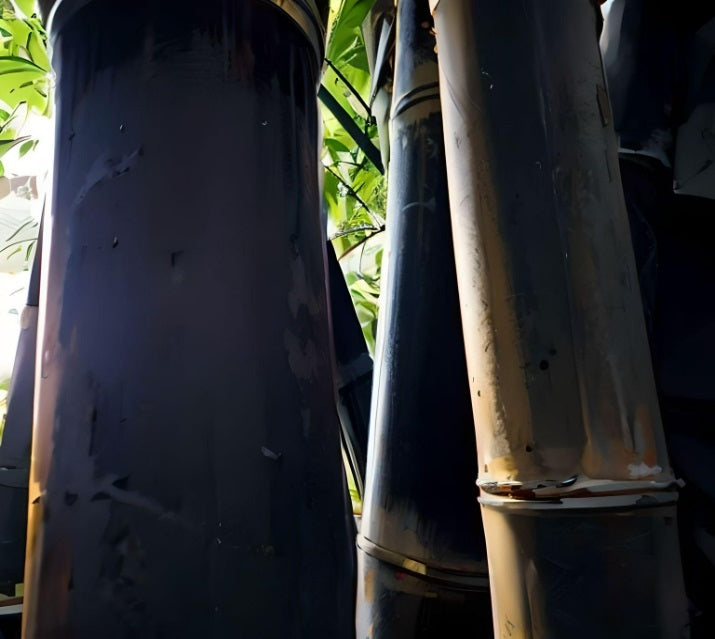
Giant Bamboo Seeds
When you're looking for impressive size with ample shade below, consider fastest...
-
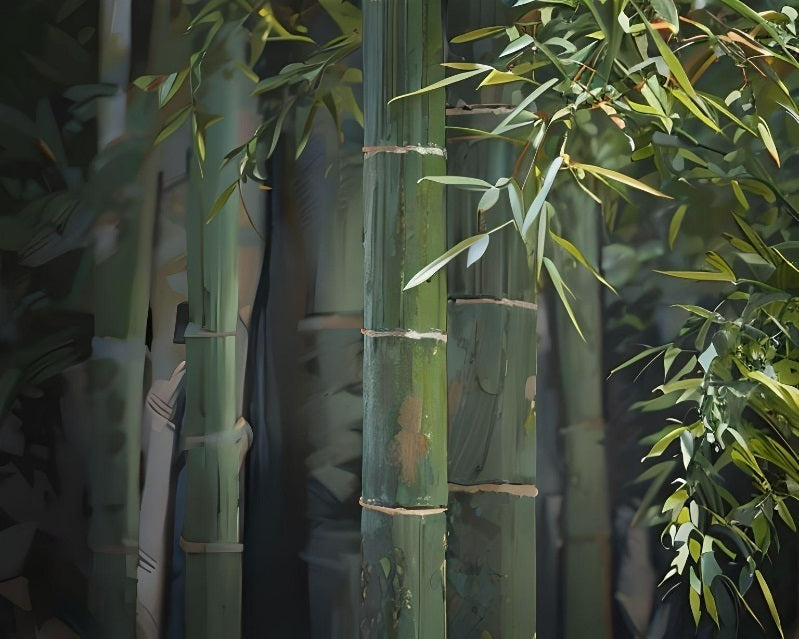
Running Bamboo Seeds
Running bamboo spreads through underground runners, known as rhizomes. These rhizomes can...
-
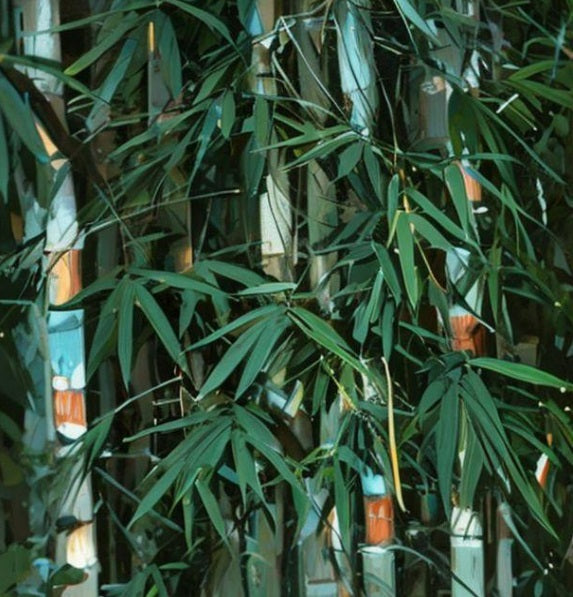
Tropical Bamboo Seeds
Our curated selection of tropical bamboo seeds best suited for planting in...

